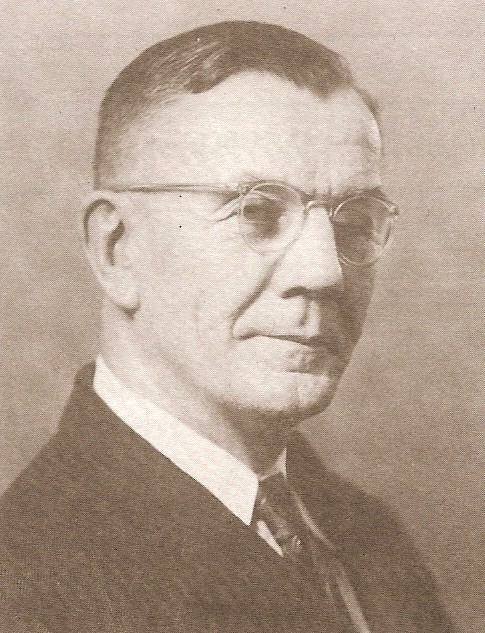耶鲁|罗德奖获得者Miner Searle Bates 的历史记录 蓝调2022-08-16 04:24:58
这是,耶鲁大学收藏的Miner Searle Bates 的历史记录,Bates先生 1937年至1941年在中国南京。
战后,在远东国际军事法庭,为日本战争侵略罪行作证。
人类的良知。

源于:https://web.library.yale.edu/divinity/nanking/bates
Miner Searle Bates was born May 28, 1897 in Newark, Ohio. His father was a minister who became president of Hiram College. Bates received his B.A. from Hiram College in Hiram, Ohio 1916 and won a Rhodes Scholarship to study at Oxford University in England. With the United States entering World War I, he joined the YMCA and served in Mesopotamia until the end of the war. He returned to Oxford to finish his B.A. and did some graduate work in 1920. In the summer of that year, he was commissioned as a missionary to teach at the University of Nanking by the United Christian Missionary Society. In 1923, he married Lilliath Robbins, a Canadian teaching at Ginling College. In 1934-35, Bates was a Rockefeller Foundation Fellow studying Japanese and Russian at Harvard University. He received a Ph.D. in Chinese history from Yale University in 1935.
When the Nanking Massacre occurred, Dr. Bates was alone in Nanking, as his wife and two children were staying in Japan. He plunged himself into the work of the International Committee for the Nanking Safety Zone, protecting Chinese from being murdered and raped by the Japanese army, and saving thousands of them from starvation. To enhance his influence in dealing with the Japanese, the directors of the University of Nanking appointed him Vice President of the University on January 13, 1938. Only two days after the fall of Nanking, Bates lodged his first protest against Japanese atrocities with the Japanese Embassy, followed by his famous January 10, 1938 letter of protest, a copy of which reached free China.
Bates was a major moving spirit behind H. J. Timperley's book, Japanese Terror in China (New York, June 1938). Except for seven brief trips to Japan and one to Spain to attend conferences, Bates remained in Nanking from 1937 to 1941, fearlessly challenging the activities of the Japanese authorities, especially narcotics-trafficking. After the war, he was summoned as a witness at the Tokyo Trial and subsequent Chinese trials for war criminals.
Bates documents available:
|
RG 10: Box 1 Folder 5: "Bates/wife and sons 1937 Jan-Aug" |
|
|
Jan. 11, 1937 "Dearest" |
|
|
Letter from Miner Searle Bates (Bates) to his wife Lilliath (LB), from Shanghai |
|
|
March 23, 1937 "Dearest" |
|
|
Letter from Bates to LB, from Tokyo |
|
|
RG 10: Box 1 Folder 6: "Bates/wife and sons 1937 Sep-Oct" |
|
|
Sept. 13, 1937 "Dear Mummy" |
|
|
Letter to Lilliath Bates from Morton Bates (son) |
|
|
Sept. 13, 1937 "Dearest" |
|
|
Sept. 23, 1937 "Dearest" |
|
|
Oct. 2-4, 1937 |
|
|
All above (Sept 13 - Oct 4): Letters to LB from Bates |
|
|
Oct. 28, 1937 "Dear Daddy" |
|
|
Letter to Bates from Morton Bates |
|
|
RG 10: Box 1 Folder 7: "Bates/wife and sons 1937 Nov-Dec" |
|
|
Nov. 14, 1937 "Dear Lilliath" |
|
|
Letter from Bates to LB, from Nanking |
|
|
Nov. 19, 1937 "Dear Searle" |
|
|
Letter from Minnie Vautrin to Bates, Nanking |
|
|
Nov. 8, 1937 "Dearest" |
|
|
Letter from Bates to LB, from Nanking |
|
|
Nov. 5, 1937 "Dearest Lilliath" |
|
|
Letter from Bates to LB, from Nanking |
|
|
Nov. 17, 1937 "Dearest" |
|
|
Letter from Bates to LB, from Nanking |
|
|
Nov. 28, 1937 "Dear Lilliath" |
|
|
Postcard from Bates to LB, from Nanking |
|
|
December 24, 1937 "Dearest Lilliath" |
|
|
Letter from Bates to LB, from Nanking |
|
|
RG 10: Box 1 Folder 8" "Bates/wife and sons 1938 Jan-Feb" |
|
|
Jan. 1, 1938 "Dearest" |
|
继续阅读 我儿子的投资帐号-隔三岔五来逛逛- 2022-08-16 03:04:57也算是给美国做了一点小小的贡献flagsix 2022-08-16 03:04:35婚姻是伴侣之间的契约(物质精神相互扶持包容愉悦),还有保险与投资的属性(贫穷疾病不离弃)。AA是人性的退化物化,不值提倡left123right 2022-08-16 02:37:34美国名校能改运?普林斯顿的研究让我有些意外(组图)ZT闲聊一二 2022-08-16 02:23:45考虑要不要跟娃讨论……川护照被收了……近期对他算不算政治迫害成功的兔 2022-08-16 02:20:34想花钱有点不舍得的我给你们这个办法jingzhumama 2022-08-16 02:18:22请教公益组织SunflowerX 2022-08-16 01:38:20接下面的贴:我女儿的小白室友们大学毕业后都会继续深造不常冒泡 2022-08-16 01:27:49为啥那么多美国人不想读大学?理由超乎想像…Tiger666 2022-08-16 00:47:03会省钱是一种能力和天赋,槐花王 2022-08-15 23:48:54 同作者 How AI Could Empower Any Business | Andrew Ng | TED蓝调 2022-10-26 06:42:10我从老无帖子里学到:对女性的尊重蓝调 2022-10-25 20:46:42Pew Research Center :工作信息蓝调 2022-10-25 05:14:23皮尤研究中心:Key facts about Asian Americans蓝调 2022-10-25 05:07:00Non-U.S. institutions that are need-blind for all applicants蓝调 2022-10-24 20:31:04MacKenzie Scott donates record $84.5 million to Girl Scouts蓝调 2022-10-24 20:28:00二马最新消息和动静,100万蓝调 2022-10-24 05:03:52Pew Research Center: Being Asian in America蓝调 2022-10-24 04:44:39斯坦福商院:前百事可乐CEO印度裔 Indra Nooyi访谈蓝调 2022-10-23 22:54:14U.S. institutions, need-blind for U.S. applicants蓝调 2022-10-23 22:42:26 |